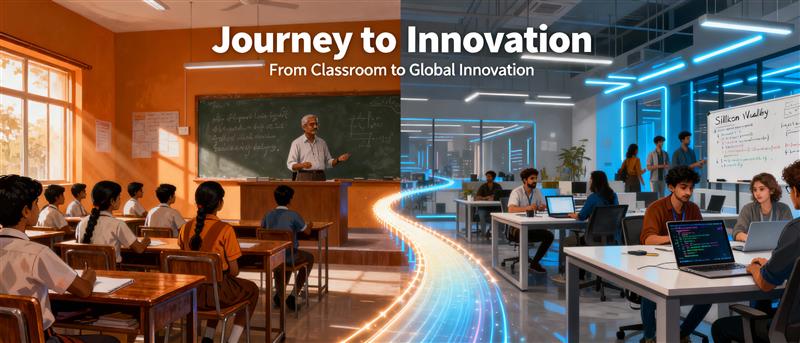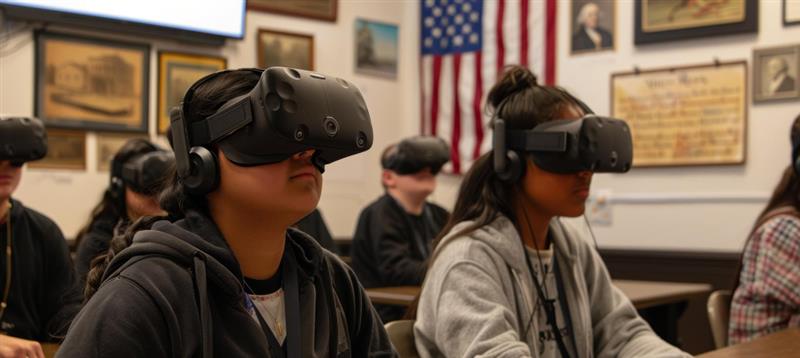For years, “distance education” was often a synonym for compromise and a trade-off of connection for convenience. The pandemic-era boom forced a rapid pivot to remote models. But today, something far more interesting is happening. Distance education is maturing towards models of learning that are engaging, dynamic, and learner-centered. The next wave of online learning is not just about digitizing a lecture, it is about fundamentally re-vitalizing the educational experience. For faculty teaching from their home offices and students logging in from around the globe, the tools and philosophies are shifting towards distributed learning environments that are highly collaborative. I appreciate the opportunity to share what I consider to be three critical areas of distance education learning environments. At Acacia University, we are watching these trends as we make progress as an online learning community.
Using AI Responsibly to Support Teaching and Learning
Artificial Intelligence is moving beyond a futuristic idea and becoming a practical resource for both educators and learners. For faculty, the biggest promise of AI is streamlining efficiency. Instead of getting buried in administrative tasks, AI-powered tools are now adept to provide real-time analytics on student engagement. This frees up instructors to do what humans do best: mentor, facilitate complex discussions, and provide nuanced, personal feedback. At Acacia we realize the speed at which AI is developing and continue to raise critical questions about these system modalities and ways they make sense in supporting our work with students while maintaining the connection with our learners.
The Rise of Microlearning and Stackable Skills
The typical lecture is being supported in new ways. The trend of “microlearning,” that involves delivering content in small, focused, and easily digestible chunks. For learners, this trend meets them where they are. Instead of scheduling a three-hour block to watch a lecture, they can consume a five-minute video in the course virtual learning forums, complete a short interactive quiz, and listen to a related podcast segment while commuting. This “just-in-time” learning is not only more engaging but also proven to improve knowledge retention. It also powers the rise of micro-credentials, allowing you to earn verifiable, “stackable” skills that you can immediately add to your resume. For faculty, this is a shift in course design, moving from a single, monolithic “course” to a dynamic library of modular content. The work becomes that of a curator and learning architect, building flexible pathways that allow students to test out of material they already know and focus only on the skills they need. For professionals engaged in work related to the course material, there are unique opportunities to leverage experiences with learning content in new and powerful ways.
Distributed Learning as a “High-Touch” Imperative: Building Real Community
Distributed learning environments no longer means being out-of-touch with the school environment. The single biggest complaint about online learning has always been isolation. The most important modern trend is the intentional use of technology to combat it. The future of distance ed is “high-touch.” For faculty, you can no longer just “open a discussion forum” and hope for the best. Building community now requires deliberate, creative strategies. This includes using modern collaborative workspaces (like “virtual whiteboards” or project-based platforms), “humanizing” the course with informal video announcements, and fostering student-led groups. The goal is to create a true social presence, reminding students that a real, engaged person is guiding their learning. For students, this means your online courses will feel less like a lonely correspondence course and more like a vibrant learning cohort. You’ll engage in more project-based group work, connect with peers in dedicated “water cooler” or “café” channels, and feel a sense of shared purpose. This social element is critical for motivation, persistence, and deeper learning.
Ultimately, these trends in AI, microlearning, and distributed learning in high-touch communities all point to a single future, one where distance education is no longer just flexible, but also deeply connected. At Acacia University, I appreciate learning from these progressive developments and exploring them with a faculty team invested in creating online learning spaces where graduate students thrive.









